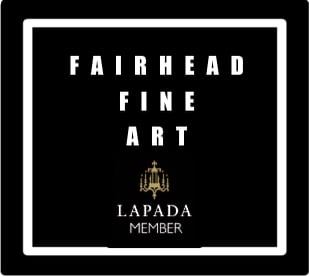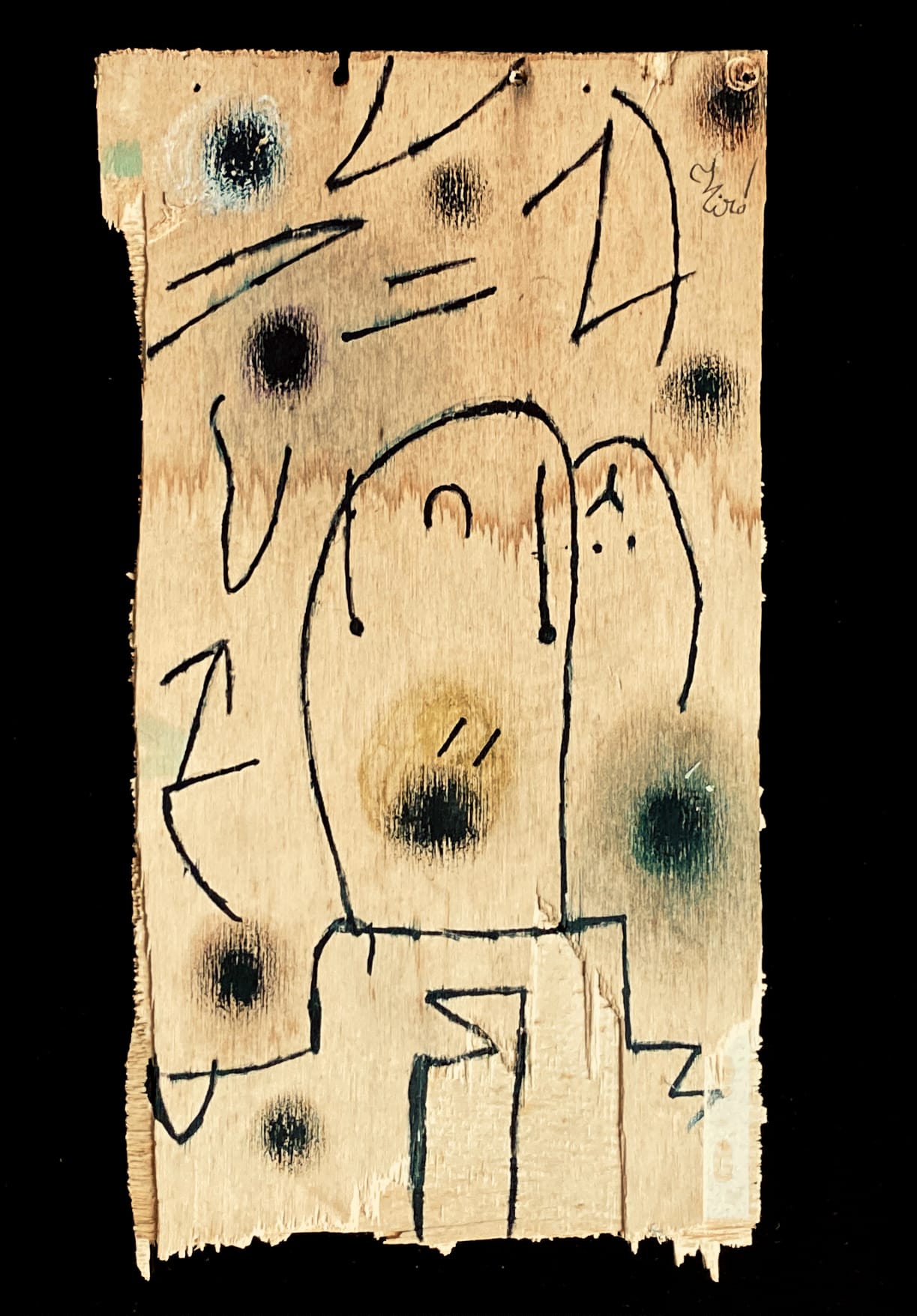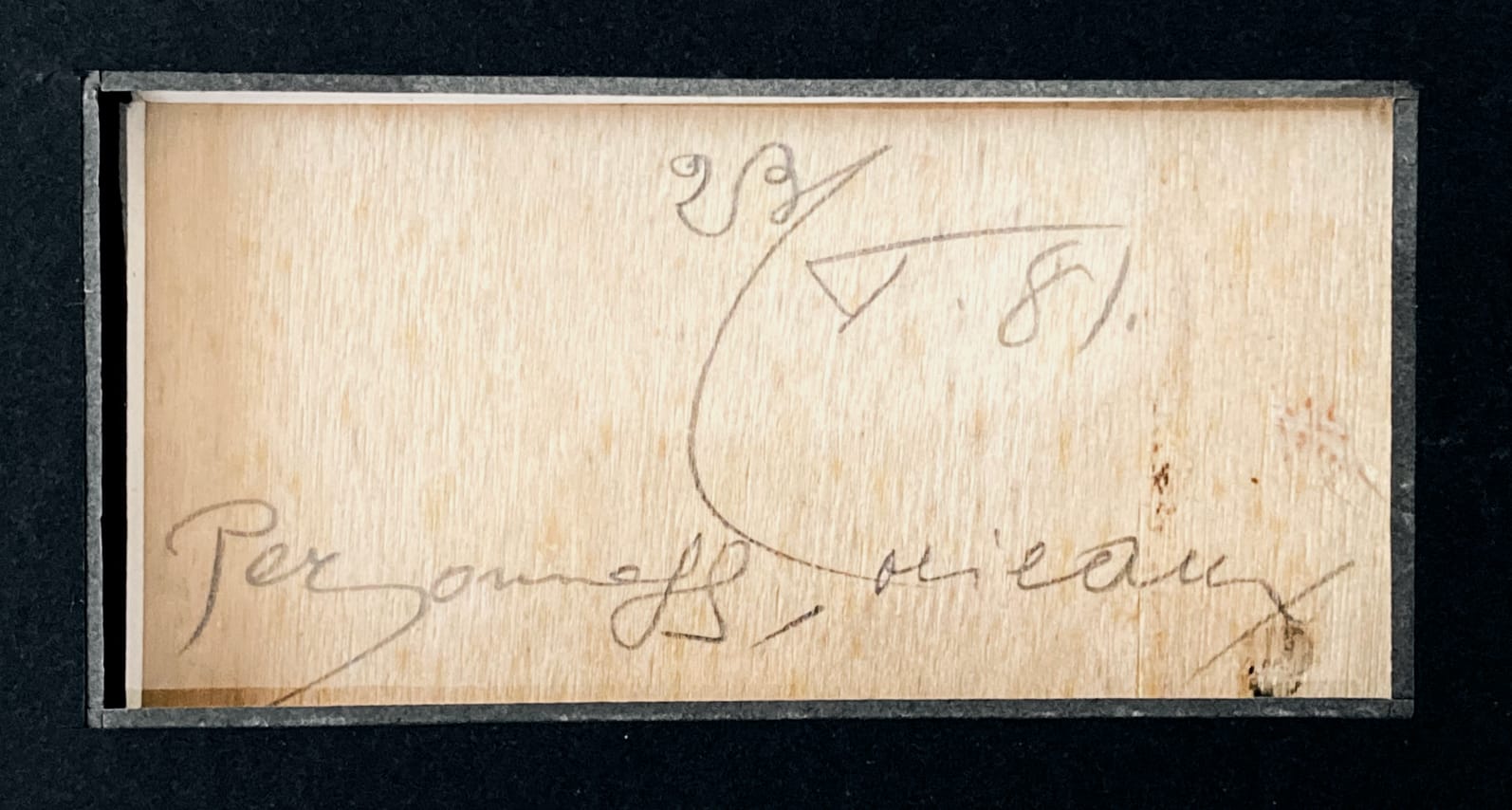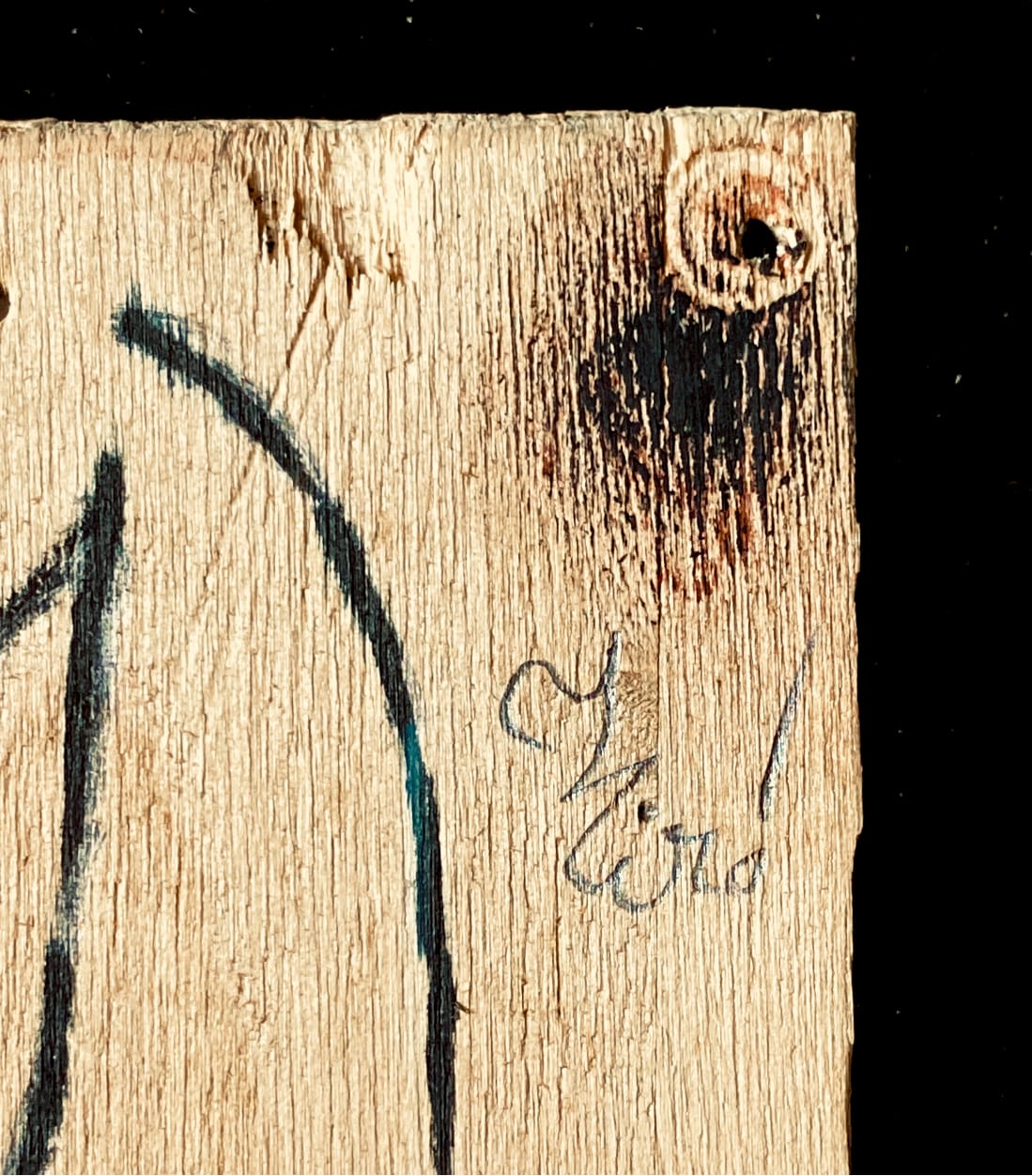Joan Miro - Personages, Oiseau
£ 0.00
Original Oil, Chinese ink and wax crayon, using different colours: Green, brown wash, black and dark blue. painted on plywood, 23/5/1981, signed by the artist in pencil, top right. The verso is titled and dated 23/V.81./
Provenance: Private collection, Majorca, Spain - this work has never passed through auction.
Size: Back size: 31 x 17.5 cms
Note: The artist loved to re-use old pieces of wood and cardboard as backcloths for his art. In many ways it could be said that he was a pioneer of the concept of re-cycling so popular today. For him if the piece was damaged or irregular in shape it did not matter. It was part of his concept of the “destruction of Art”. Towards the end of his career, as well as expressing his commitment to social change through art, Miró also questioned the economic value of art, de-sanctifying art, acting without distinction between creation and destruction. Our work is painted on an irregular piece of discarded plywood. Other examples exist in a similar metier.
Of Miro's later work, Jacques Dupin writes, "During the final years of his life, Miro continued to execute magnificent paintings, densely inhabited, insurgent dances...The simplified aspect of these paintings evokes the barrenness of winter, long after the charm of falling leaves has worn thin" (Jacques Dupin, Miro, Barcelona, 1993, pp. 351-52). The present work embodies this stark intensity, resplendent in a variety of gestural brushstrokes and deliberate drippings. In an attempt to transform the wood's rigid grain, Miro imparts life through colour. The ambiguous title and the absence of figurative expression yield to the creative associations of the human mind. We as observers are consumed by this interpretive freedom, left to plunge wholeheartedly into the depths of our own fantastical whims. Dupin continues to assert that “Miro emphasized the painting's structure and pared its gesture to the bone. He emphasiced contrast, and revealed the armature and the framework...[These works] seem to live outside time, and outside the cycles and pendulum effects we are accustomed to finding in his work. Their existence is abrupt and detached, like death-stones, swirls of sand in a desert, or cliffs jutting into the sea" (ibid p. 352).
Condition: In very good condition but the wood on which it is implanted is irregular and torn - as the artist wished it to be.
Authentication: The work has a certificate from ADOM, (Association pour la Défense de l'œuvre de Joan Miró) dated 4th December 2019
Reference: Dupin, Jacques; Lelong-Mainud, Ariane (2018): Joan Miro. Catalogue Raisomnne: Drawings. Vol VI, 1978/1981, Daniel Lelong, succession of Joan Miro, Paris: Page 299, number 5184
Category Joan Miro



